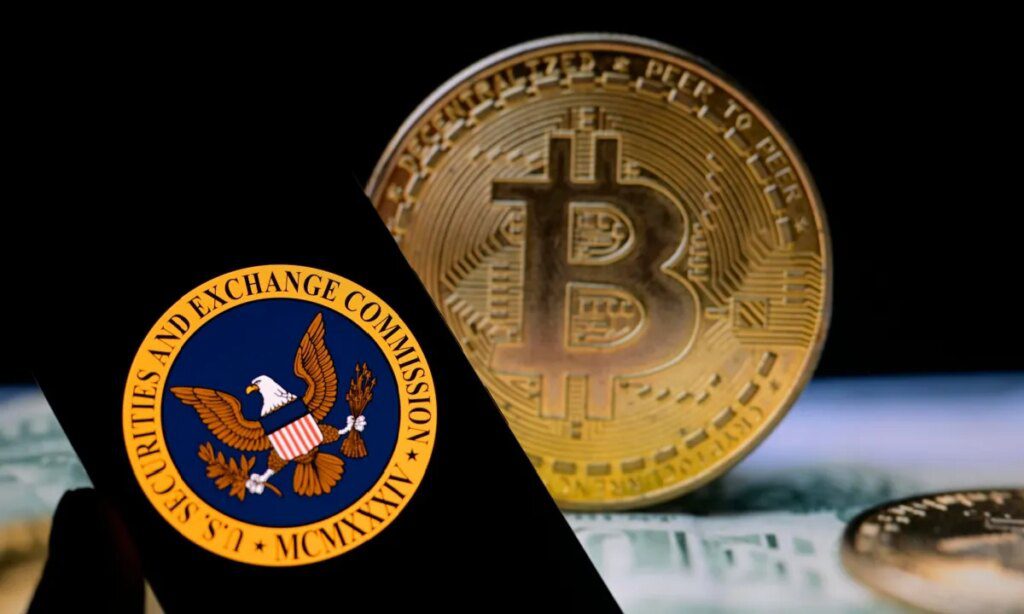For all its technological underpinnings, the crypto industry also relies on a parallel language adopted by its followers. Behind the memes and market noise lies a dense web of cryptographic constructs and economic experiments.
This led to a industry glossary This is part engineering slang and part digital mysticism, encompassing terms like ecosystem staking, blockchain layers, zero-sum proofsliquidity pools, airdrop poachers, stable sandwichesponzinomics, recursive yield, MEV, WAGMI, HODL and many other terms rendered opaque to the uninitiated.
It also had the unintended consequence of making digital assets increasingly difficult to classify within traditional securities and commodities frameworks, leading to more than a decade of regulatory opacity in the United States.
But everything is starting to change.
Wednesday, November 12, the United States Securities and Exchange Commission (SEC) President Paul Atkins gave a speech at the Federal Reserve Bank of Philadelphia to attempt to clarify the agency’s approach to the taxonomic and policy bottlenecks that keep crypto markets in a regulatory limbo.
Atkins began by acknowledging the fog that has long shrouded crypto regulation: “If you’re tired of hearing the question ‘Are crypto assets securities?’ », I sympathize very much.
Advertisement: Scroll to continue
Atkins explicitly stated that many tokens traded today are not securities and called the previous overly broad approach “not sustainable or feasible.” He emphasized that the term “crypto asset” has no statutory meaning under securities laws; it simply describes a technological attribute.
“Economic reality trumps labels. Calling something a ‘token’ or an ‘NFT’ does not exempt it from current securities laws if it In substance represents a claim on a company’s profits and is offered with the kind of promises based on the essential efforts of others. Conversely, the fact that a token was once part of a capital raising transaction does not magically convert that token into shares of an operating company,” Atkins explained.
This established the prelude to the SEC chief’s main structural contribution: a proposed symbolic taxonomy on which a policy framework could be built and implemented.
Learn more: From Bitcoin Maxis to Yield Farmers: a crypto archetype Glossary
Moving from uncertainty to taxonomy
The SEC chairman’s speech comes just days after lawmakers secured a bipartisan agreement. For A crypto market structure bill Monday (November 10).
The bill assigned primary jurisdiction over “digital asset transactions” to the Commodity Futures Trading Commission (CFTC), empowering the agency to regulate such transactions and set fundamental principles for digital commodity exchanges, broker-dealers And dealers, while leaving the role of the SEC relatively attenuated.
As the SEC seeks to delineate its oversight responsibilities for digital assets, Atkins has defined four categories: (1) “digital products” or “network tokens” which, while decentralized and functional, are not, in its view, securities; (2) “digital collectibles”, also not titles; (3) “digital tools,” meaning functional tokens for membership, credentials, or titles, not titles; and (4) “symbolic securities,” which are securities and must be treated as such.
By calibrating this taxonomy, it could create a clearer regulatory path for companies and investors who have been forced for too long to guess whether a particular token is a securities instrument.a guess which often defaults to “yes” under past SEC positions.
Regarding custody and negotiation, Atkins emphasized “choice.” He reaffirmed the importance of self-care as a core American value even because many investors will rely on intermediaries. He also endorsed the emerging concept of “super-apps”: platforms that offer custody, trading, lending, staking and tokenized securities services. And non-security tokens under one roof.
Learn more: Congress puts the SEC and CFTC on a collision course Cryptocurrency
Strategic implications for the future
If the SEC taxonomy is adopted, most tokens could escape classification as securities, thereby reducing registration, disclosure and monitoring burdens on broker-dealers. The speech marks a marked shift from the SEC’s prior positions, which have traditionally relied on enforcement, securities’ treatment of tokens, and regulatory uncertainty.
For the US digital asset ecosystem, this could be the start of a new chapter. But the chapters are written in the legislative halls, the rule-making files And enforcement decisions, not just speeches. Many actions are not yet codified; and the power of how the taxonomy will be operationalized remains to be tested.
As Dan Boylepartner at Schiller Flexner Bodiessaid Karen Webster of PYMNTS in a previous interview, crypto doesn’t get a get out of jail free card.




